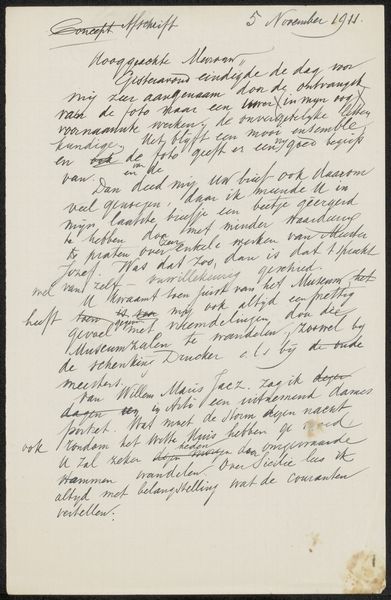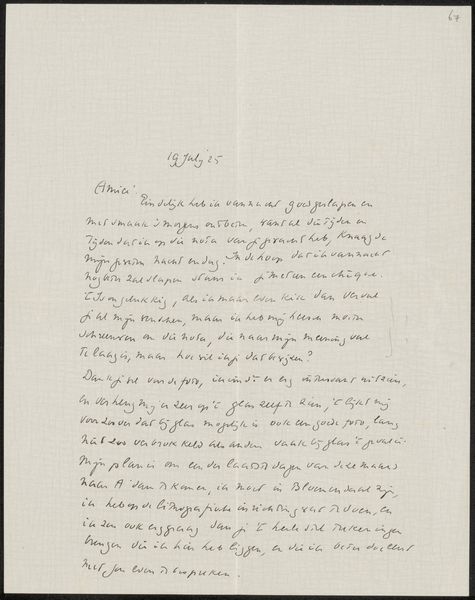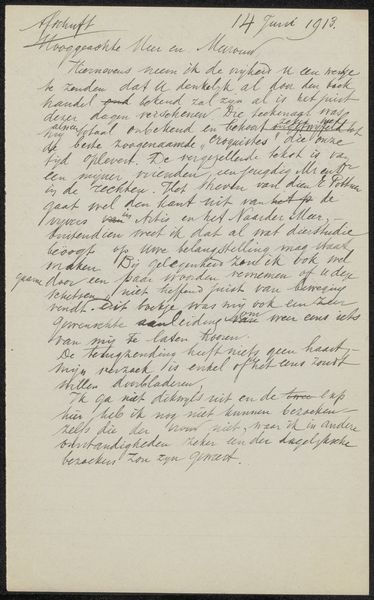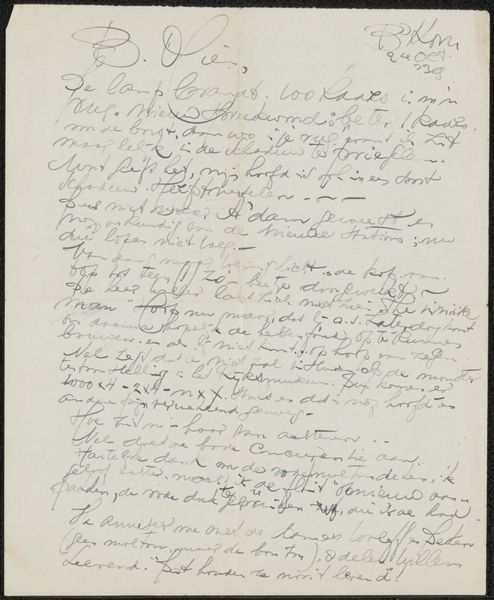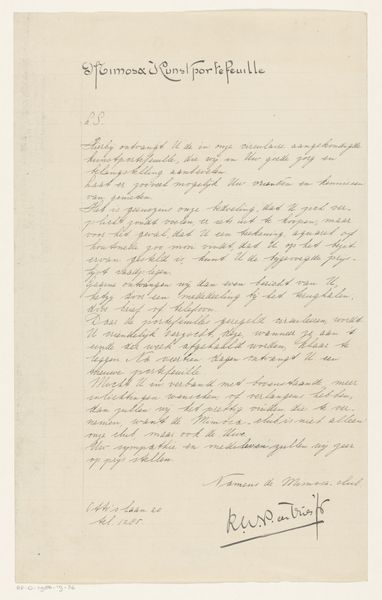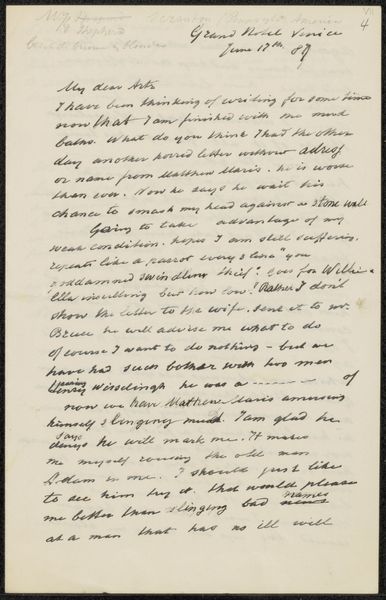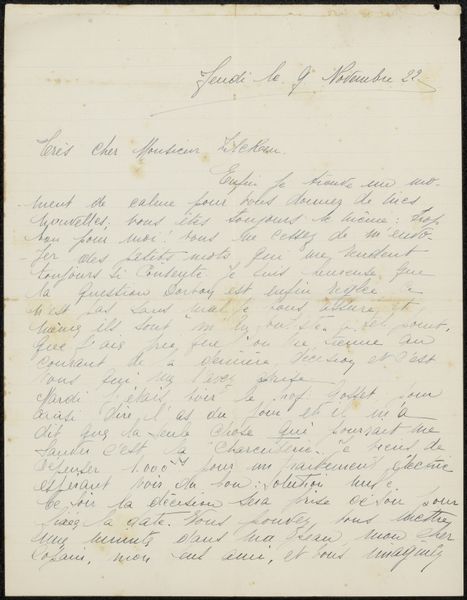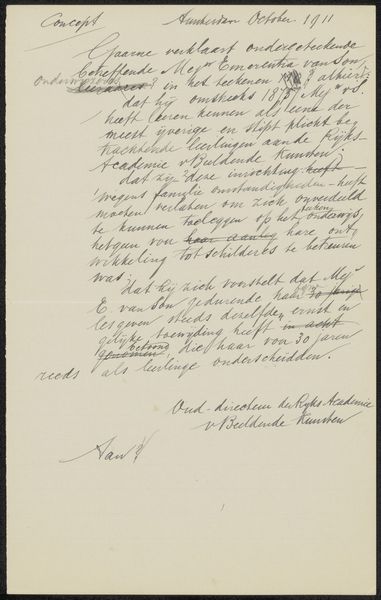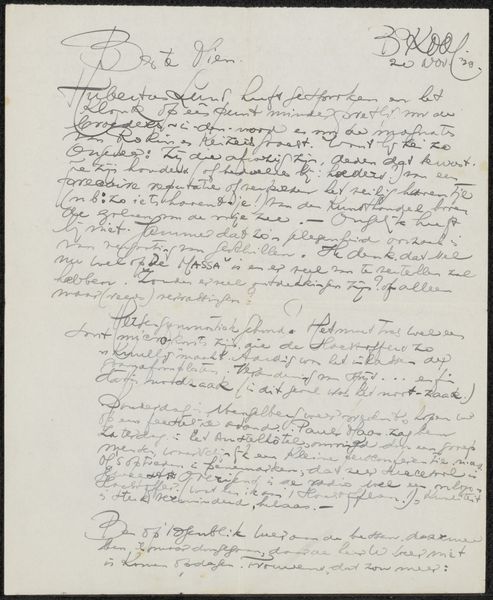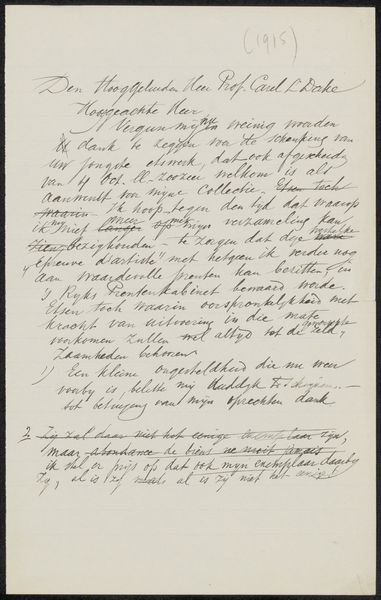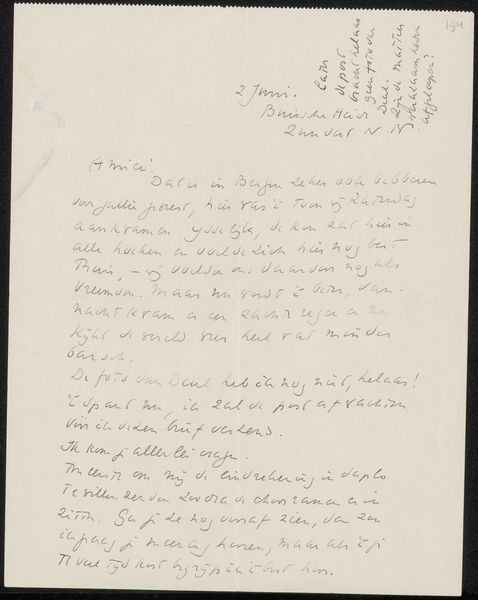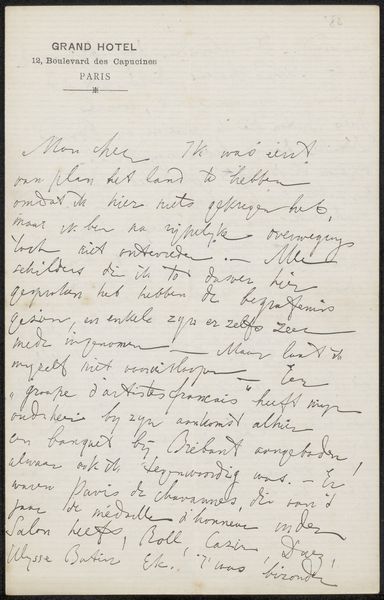
Facsimile van een brief van Jan van Speijk aan zijn nicht mevr. de Dieu-van Tonderen, 1830 1831 - 1832
0:00
0:00
willemcornelisvanbaarsel
Rijksmuseum
drawing, paper, ink
#
drawing
#
paper
#
ink
#
romanticism
Dimensions: height 253 mm, width 224 mm
Copyright: Rijks Museum: Open Domain
Editor: So, this is "Facsimile van een brief van Jan van Speijk aan zijn nicht mevr. de Dieu-van Tonderen, 1830" by Willem Cornelis van Baarsel, made around 1831-1832. It’s ink on paper, and you can see it at the Rijksmuseum. I’m immediately struck by how personal it feels, seeing the handwriting. How do you read this piece? Curator: I read it as a powerful intersection of personal history and national narrative. The letter itself is a vulnerable act of communication, and its reproduction elevates it to the level of historical document. What sociopolitical climate framed Jan van Speijk’s actions, and whose stories get told in mainstream narratives about Dutch national identity? We might think about power structures. Editor: Can you elaborate? It's still not entirely clear to me. Curator: Van Speijk became a national hero during a period of national unrest and war. Reproducing his letter helps build a story of national identity, right? But who does that narrative serve? Whose voices and perspectives might be marginalized or actively excluded by this romanticized retelling? This is just ink on paper; but it comes loaded with meaning. Editor: I see. So, it's less about the letter's content and more about what its existence and reproduction signify in terms of nationhood and belonging. It’s like the letter is evidence in an ongoing trial about what a nation chooses to remember. Curator: Exactly! Think about the power of archives, what is collected and presented, and why. Examining this letter helps reveal the complexities of how we build national stories and remember figures. Editor: Thank you, that adds much more complexity to the drawing for me, and makes it all the more interesting.
Comments
No comments
Be the first to comment and join the conversation on the ultimate creative platform.
